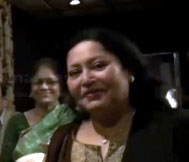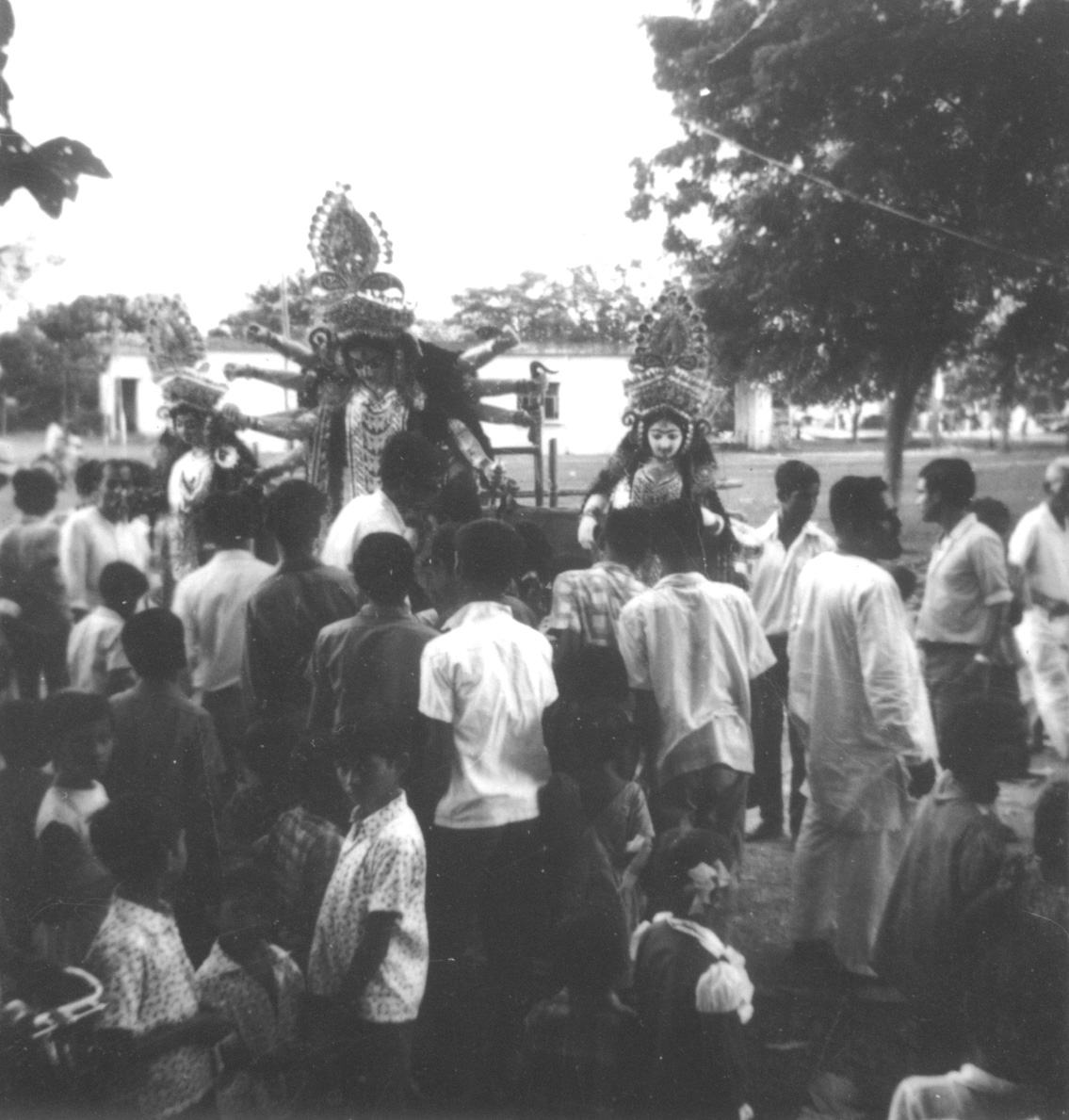 Few minutes ago an old friend of mine called to wish me for the upcoming Durga Puja festivals. He said, “It’s Mahasasthi in Kolkata today!” I wished him back, but it occurred to me that it’s Mahasashti everywhere, not only in Kolkata. When I reminded him, he laughed and said, “Yes indeed. But our Sasthi starts on coming Friday!” And he is absolutely right. Our Pujo in New Jersey (I am referring to the Kallol Durga Pujo which we both attend), starts on October 15th, Friday evening and that’s our Mahasasthi. The thought does give me some consolation that Pujo is yet to start and we have few more days to look forward too. But my friends and family in Kolkata have started enjoying their Pujo. They have started posting photos of their favorite idols on Facebook and Orkut, sending Pujo greetings through emails and expressing their joy and merriment. ETV Bangla is taking us through the streets of Kolkata and the online newspapers and magazines giving us day by day commentary of the Pujo happenings. And we cannot deny that this does cause a bit of a tinge in our hearts. Continue reading
Few minutes ago an old friend of mine called to wish me for the upcoming Durga Puja festivals. He said, “It’s Mahasasthi in Kolkata today!” I wished him back, but it occurred to me that it’s Mahasashti everywhere, not only in Kolkata. When I reminded him, he laughed and said, “Yes indeed. But our Sasthi starts on coming Friday!” And he is absolutely right. Our Pujo in New Jersey (I am referring to the Kallol Durga Pujo which we both attend), starts on October 15th, Friday evening and that’s our Mahasasthi. The thought does give me some consolation that Pujo is yet to start and we have few more days to look forward too. But my friends and family in Kolkata have started enjoying their Pujo. They have started posting photos of their favorite idols on Facebook and Orkut, sending Pujo greetings through emails and expressing their joy and merriment. ETV Bangla is taking us through the streets of Kolkata and the online newspapers and magazines giving us day by day commentary of the Pujo happenings. And we cannot deny that this does cause a bit of a tinge in our hearts. Continue reading
Tag Archives: stage
Bengali Theater in North America : My First Experience
Since 1989 I have been involved with Bangla Theater in USA. Over the years I have worked with several groups, several associations and have been involved with several theater productions. My theater journey in this country started with the theater group Sansaptak with their production “Sabda Moho Bandhane”. The play was directed by Sakti Sengupta. Being involved with theater since my childhood, I was a bit skeptic about the theater scenario in USA when I first arrived in this country. But my first experience was not only a pleasant surprise but an extremely enjoyable one. All the stereo typical notions of expatriate Bengali theater were shattered with that production. Sakti-da took us through a complete production development process of a new play. The script was developed based on Shirshendu Mukherjee’s short stories, Sunil Ganguly and Sakti Chattopadhyay’s poems. It was not a simple narrative, but rather a complex collage of character’s, their relationships, their dreams and disillusionment. Continue reading
“Ekti Gnaye Thaki” : A Preview
Simanti Dasgupta
 Many of us will intuitively link the title of the play to Rabindranath Tagore’s well know poem, “Ek Gnaye” and correctly so. Sambhu Mitra and Tripti Mitra particularly immortalized the poem in their rendition of it in Bidhayak Bhattacharya’s celebrated radio play, “Tahar Naamti Ranjana”. “Ekti Gnaye Thaki”, written and directed by Sudipta Bhawmik, is the story of a sister, Ranjana and her brother, Rajat, reuniting after fourteen years. Rajat immigrates to the US with his family after Ranjana sponsors their green cards. The reunion is marked by its usual excitement followed by nostalgia for their “gnya” they left both behind. Rajat becomes a critical link for Ranjana to relive her past, while Ranjana helps him come to terms with his decision to abandon his familiar world in Gobindapur. Ranjana is also ill and Rajat’s presence offers a long-awaited emollient. As the brother and the sister often slip into the past, the rest of the characters are excited at the prospects of their future in the US, especially Rajat’s son, Rajib.
Many of us will intuitively link the title of the play to Rabindranath Tagore’s well know poem, “Ek Gnaye” and correctly so. Sambhu Mitra and Tripti Mitra particularly immortalized the poem in their rendition of it in Bidhayak Bhattacharya’s celebrated radio play, “Tahar Naamti Ranjana”. “Ekti Gnaye Thaki”, written and directed by Sudipta Bhawmik, is the story of a sister, Ranjana and her brother, Rajat, reuniting after fourteen years. Rajat immigrates to the US with his family after Ranjana sponsors their green cards. The reunion is marked by its usual excitement followed by nostalgia for their “gnya” they left both behind. Rajat becomes a critical link for Ranjana to relive her past, while Ranjana helps him come to terms with his decision to abandon his familiar world in Gobindapur. Ranjana is also ill and Rajat’s presence offers a long-awaited emollient. As the brother and the sister often slip into the past, the rest of the characters are excited at the prospects of their future in the US, especially Rajat’s son, Rajib.
Countdown to NABC 2010
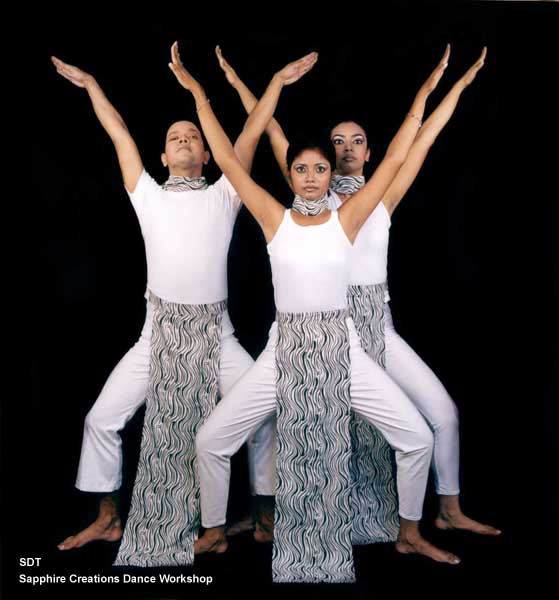 The count down to NABC 2010 has started. In little more than seven months from now, Bengalis from all over USA and abroad will converge upon Atlantic City in New Jersey. Kallol of New Jersey, the host organization of NABC 2010, is working at a hectic pace to make it a great event. Most of the performers have been lined up, registrations pouring in and the committee members are busy working on the final details like scheduling and fund raising. On January 8th, 2010, a kickoff meeting/press-conference will be held in Kolkata in the presence of most of the artists and performers.
The count down to NABC 2010 has started. In little more than seven months from now, Bengalis from all over USA and abroad will converge upon Atlantic City in New Jersey. Kallol of New Jersey, the host organization of NABC 2010, is working at a hectic pace to make it a great event. Most of the performers have been lined up, registrations pouring in and the committee members are busy working on the final details like scheduling and fund raising. On January 8th, 2010, a kickoff meeting/press-conference will be held in Kolkata in the presence of most of the artists and performers.
Lets take a look at some of the foreign performers who will grace the Atlantic City convention center stage. I’ll not be able to cover all of them in this article and plan to continue in future posts. At the 2010 NABC Kallol will be presenting some performers who are relatively unknown to the Bengali crowd in USA. One such group is Sapphire Creations Dance Workshop who will be performing at the opening ceremony. Sapphire Creations is a premier experimental dance company based in Kolkata and the only one of its kind in Eastern India performing regularly and popularly in festivals and arts events in India and abroad. Their objective is to integrate in its dance an awareness of tradition, a dimension of experimentation, an urge to entertain and a purpose to provoke consciousness to inspire us to reach brighter horizons. Continue reading
Loss of a Friend
Three months ago, when I lost my mother, I received the following email from a close friend:
The email was from Gayatri Gamarsh (who allowed me to call her as Gayatri-di) and it really helped me cope with my pain. Little did I know that three months later, Gayatri-di herself will move on to “her after-life” leaving us behind mourning her loss.
I came to know Gayatri-di mainly through her literary works and her love for anything artistic. She used to love coming to our plays and appreciated them very much. Several times she has written about our plays in Anandasambad and other magazines. Her appreciation and encouragement meant a lot to me and my team mates. It is for people like Gayatri-di that makes all the hard work in writing and staging a play worth it.
In September, she had participated in a workshop on creative Bengali writing conducted by Sunil Gangopadhyay. She had rescheduled her heart surgery just to attend this workshop online. That was the last time I had heard her voice on the phone. Later, after her surgery, she had sent me an email asking for an article or cartoon for the “Sambad Bichitra” English section. But I never had the chance to hand it to her.
As mentioned by Gayatri-di in her email, I’ll believe that she is always with us and will be watching any play we put up or read any article I write or any cartoon I draw.
Goodbye Gayatri-di and thank you for all your encouragement and blessings, for those will be my source of inspiration for whatever I do in the future.
New Jersey Durga Puja 2009 : A Review
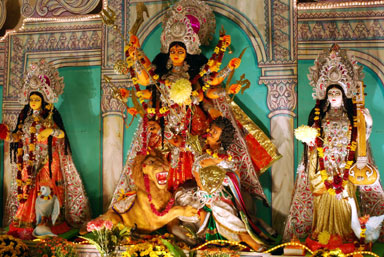 Finally the annual Durga Puja celebrations are over. I was mostly present at the Kallol pujo but also paid (no pun intended) short visits at the Bharat Sevashram Sangha and Anandamandir. Kallol, just like the previous year, had a full house and had to turn away several people. In one of my previous blogs I had requested, rather wished, that Kallol provide a daily ticket for people who would like to come in for a day. However, for whatever reasons, Kallol decided on the contrary and the result was that I had to listen to complaints from several disappointed friends and family. Well, rules are rules – that’s what I said.
Finally the annual Durga Puja celebrations are over. I was mostly present at the Kallol pujo but also paid (no pun intended) short visits at the Bharat Sevashram Sangha and Anandamandir. Kallol, just like the previous year, had a full house and had to turn away several people. In one of my previous blogs I had requested, rather wished, that Kallol provide a daily ticket for people who would like to come in for a day. However, for whatever reasons, Kallol decided on the contrary and the result was that I had to listen to complaints from several disappointed friends and family. Well, rules are rules – that’s what I said.
This year I did something which I never did before. I dropped in on Thursday evening – and it was real fun. There was no pressure of showing the badge, no parking tags, no stress about reserving seats with shawls and jackets and no celebrities on stage to pay attention to. While the volunteers were busy setting up the idol and the kids busy rehearsing on the stage, I had a good time chatting with friends. For once, after a long time, I had the pleasure of pure Pujo adda – completly unadultered fun. I think we should, at least informally, start the festivities from Thursday – just to prolong the enjoyment for few more hours. Continue reading
Durga Puja and Cultural Events: The 2009 New Jersey Lineup
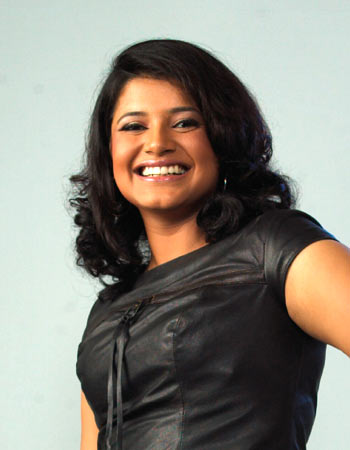 In New Jersey, Durga Puja is a special time when the festive mood brings with it a flurry of entertainment and cultural programs across the state. This year too the line up looks very promising although the spirits have dampened a bit due to the tough economic times and with the rejection of visas of few of the performers. Still the combination of local talents and professionals from India is bound to enthrall the Puja attendees on the coming weekends.
In New Jersey, Durga Puja is a special time when the festive mood brings with it a flurry of entertainment and cultural programs across the state. This year too the line up looks very promising although the spirits have dampened a bit due to the tough economic times and with the rejection of visas of few of the performers. Still the combination of local talents and professionals from India is bound to enthrall the Puja attendees on the coming weekends.
I’ll try to briefly summarize the lineup this year, although the organizers have in many cases conveniently omitted the details about the local performers from their web sites. I tried to collect as much information I could manage. If any of you have more information, then please feel free to add them to this post as comments. Continue reading
Goat and the Bengali Intelligentsia
 The intelligentsia (as defined by Wikipedia) is a social class of people engaged in complex mental and creative labor directed to the development and dissemination of culture, encompassing intellectuals and social groups close to them. You can very well attribute this term to the Bengali society who fits this definition quite well. But what does a timid and herbivorous (although Bengalis think goats to be omnivorous – chhagole ki na khay) mammal like goat got to do with this elite group of people? The answer to this is well known to all of us – Bengalis love goat meat. Although in other parts of the World, goat milk and milk products (cheese) are also extremely popular, but we the Bengalis don’t care much about the milk. It is the meat that is most important to us – the ultimate food in any Bengali plate. Historically, goat meat is the only kind of meat that Bengalis (especially the Hindu Bengalis) ate. Goats were the most popular offerings to Goddess Kali and Durga – and the meat then cooked in a recipe void of any garlic or onions and hence termed as “vegetarian meat”.
The intelligentsia (as defined by Wikipedia) is a social class of people engaged in complex mental and creative labor directed to the development and dissemination of culture, encompassing intellectuals and social groups close to them. You can very well attribute this term to the Bengali society who fits this definition quite well. But what does a timid and herbivorous (although Bengalis think goats to be omnivorous – chhagole ki na khay) mammal like goat got to do with this elite group of people? The answer to this is well known to all of us – Bengalis love goat meat. Although in other parts of the World, goat milk and milk products (cheese) are also extremely popular, but we the Bengalis don’t care much about the milk. It is the meat that is most important to us – the ultimate food in any Bengali plate. Historically, goat meat is the only kind of meat that Bengalis (especially the Hindu Bengalis) ate. Goats were the most popular offerings to Goddess Kali and Durga – and the meat then cooked in a recipe void of any garlic or onions and hence termed as “vegetarian meat”.
Habib Tanvir : The Legend Lives On
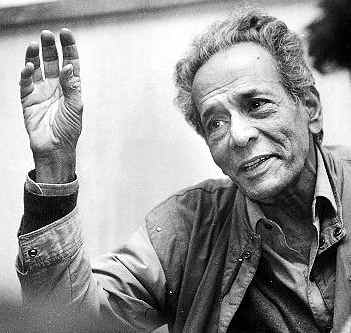 Very few theatre personalities in India have become legends in their life time. Habib Tanvir was one of them. Born as Habib Ahmed Khan on September 1, 1923 in Raipur, Chattisgarh, Habib Tanvir has reinvented Indian folk theater and brought it out on the world stage in its full glory. I still remember the evening in Calcutta when I watched his brilliant creation “Charandas Chor”. The presentation of the play in a traditional folk form looked so modern, so fresh, that I couldn’t think of anything comparable in contemporary theatre. Habib, through is work, has left a legacy that is difficult to carry on – because it demands a level of dedication that many of our modern theatre workers will fail to match. The sensitivity with which he nurtured the folk forms, experimented with content and presented them with such grace and simplicity – only a true genius can achieve such excellence.
Very few theatre personalities in India have become legends in their life time. Habib Tanvir was one of them. Born as Habib Ahmed Khan on September 1, 1923 in Raipur, Chattisgarh, Habib Tanvir has reinvented Indian folk theater and brought it out on the world stage in its full glory. I still remember the evening in Calcutta when I watched his brilliant creation “Charandas Chor”. The presentation of the play in a traditional folk form looked so modern, so fresh, that I couldn’t think of anything comparable in contemporary theatre. Habib, through is work, has left a legacy that is difficult to carry on – because it demands a level of dedication that many of our modern theatre workers will fail to match. The sensitivity with which he nurtured the folk forms, experimented with content and presented them with such grace and simplicity – only a true genius can achieve such excellence.
Habib Tanvir passed away on June 8th, 2009, but the lengend he became still lives on and inspires theatre workers all around the globe.
Kathak in America – The Story of Kalamandir
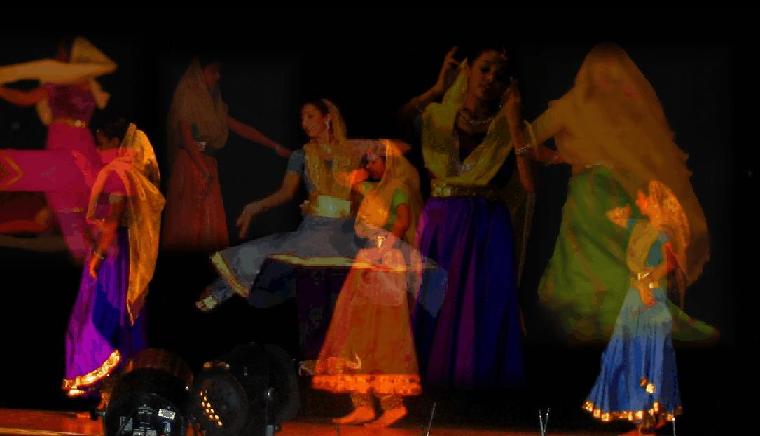 The classical Indian dance form Kathak is now quite well known amongst the dance connoisseurs of America. Americans who have some familiarity with classical music and dance of India, know about Kathak – a dance form that truly blends together the various components of Indian music – melody, rhythm and the beauty of the physical form. It is true that many stalwarts of the Kathak dance form like Pandit Birju Maharaj and others have graced the American stage with their amazing performances, but the primary reason for its popularity and sustenance in this country is due to the tremendous efforts put in by several Kathak dance schools and academies run by the immigrant dancers from India who wanted to spread their passion for this art form amongst the next generation. Once such school is Kalamandir of New Jersey led by its director, Malabika Guha.
The classical Indian dance form Kathak is now quite well known amongst the dance connoisseurs of America. Americans who have some familiarity with classical music and dance of India, know about Kathak – a dance form that truly blends together the various components of Indian music – melody, rhythm and the beauty of the physical form. It is true that many stalwarts of the Kathak dance form like Pandit Birju Maharaj and others have graced the American stage with their amazing performances, but the primary reason for its popularity and sustenance in this country is due to the tremendous efforts put in by several Kathak dance schools and academies run by the immigrant dancers from India who wanted to spread their passion for this art form amongst the next generation. Once such school is Kalamandir of New Jersey led by its director, Malabika Guha.

